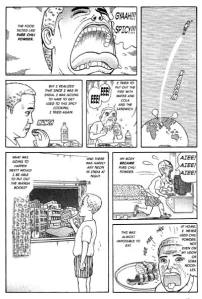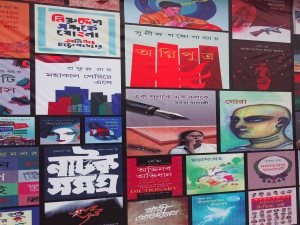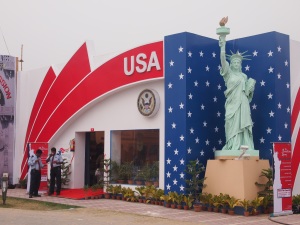
I devoured this in about three days when I had lots of other work I should have been doing. ‘While the Gods Were Sleeping’ is a wonderful, honest account of a young woman’s encounter with an alien culture that she hadn’t been all that interested in coming face-to-face with, and it was that honesty from the outset that made me like, and empathise with, Elizabeth Enslin.
A young anthropology student in the 1980s, Enslin meets her future husband Pramod while at grad school. She had intended to specialise in some part of Africa, but as Pramod becomes an increasingly important part of her life, she switches academic tack and forces herself to become interested in South Asia. Her descriptions of the confusion and desperation of finding your path through grad school is so relatable to anyone who has been through this themselves. Her attempts to combine her research and love interests leads her to the Nepali Terai–the plains bordering India–where her husband’s family live. She admits never having been drawn to Nepal, even while her peers were taking themselves off on pilgrimages to the mountains, and this is something I feel an affinity with. After having lived in Kathmandu for a year myself, I feel a strong attachment to the country now, but while I loved India and was constantly drawn back to it, I still am, it was really only my job in Kathmandu that took me there, and it might have taken me several more years to make it there if not for the job. I still don’t entirely understand the stereotypical hippy-trail pull of Nepal, and neither did Enslin.
While the Gods Were Sleeping is Enslin’s account of how she trod the very tenuous line between Nepali daughter-in-law and foreign anthropologist, how she had to make enormous compromises and sacrifices in both roles, but was ultimately successful–in that way that ambitious, talented women often are–in making it all work, imperfect as it was.
Although the sub-title of this book–‘A Journey Through Love and Rebellion in Nepal’–is actually perfectly descriptive of what transpires, as Enslin is involved with some women’s movements in Chitwan, knowing what I do of Nepal, I thought it meant the Maoist insurgency. In fact, the book is set some years before that, in the 1980s, but it was only when I was quite a long way into it that I realised that particular rebellion had no part in the story. It’s a minor thing which might not bother a reader who knows less about the country, but I thought it was unnecessarily misleading.
Anthropology is a discipline that, as a student of literature and history, I was always taught to be suspicious of, and I admit that I still am, even after completing a PhD at an institution in which it was strong. While the Gods Were Sleeping, while not an overt critique of the discipline, certainly raises a lot of the issues that we should be suspicious of, particularly those concerning neo-imperialist attitudes. Even as a pretty savvy young scholar, Enslin had some rather naive beliefs that can be largely attributed to the need for an academic to structure their work in a particular way to meet funding requirements and so on. For example, Enslin writes:
“When I switched from Africa to India, I had hoped to base my work in an area where there would be a clear divide between oppressors and oppressed, and some grassroots movement welling up from the latter. When I gave up on India and resigned myself to Nepal, I knew the grassroots movement would be hard to find but still hoped for some line between the haves and have-nots.” (p. 89)
Enslin was approaching Nepal as somewhere that didn’t fit the parameters that she required for her PhD study, that failed to rise up and meet her, rather than vice versa. But, to her credit, she recognises this in hindsight and that’s what makes her account the nuanced, self-reflexive study that it is. She writes, later:
“I grew to love that concept of culture the way I loved my Swiss army knife. If culture, rather than human nature, made us who we were, there was nothing natural or inevitable about racism, hate, war. With a concept of culture, we anthropologists could fix anything, or at least explain it. But too deep a love can disappoint, and that concept of culture had so far mostly failed me in Nepal. Ever since my first arrival, Pramod’s family and village had offered a perfect opportunity for intimacy with another culture. My pregnancy offered even more. Even when I didn’t plan research there, I should have been more curious. Yet all along disappointment nagged at me: these Brahmans I lived among were not the kind of Others I had in mind when I decided to become an anthropologist.” (p. 120).
Enslin is the author of an influential academic essay, ‘Beyond Writing: Feminist Practice and the Limits of Ethnography’, which I have been encouraged to read after reading this book.
While the Gods Were Sleeping is not a ‘mainstream’ book that a large number of readers will be able to identify with, but anyone with an interest in real South Asian issues, feminism, athropology and the developing world will find it immensely satisfying.


























